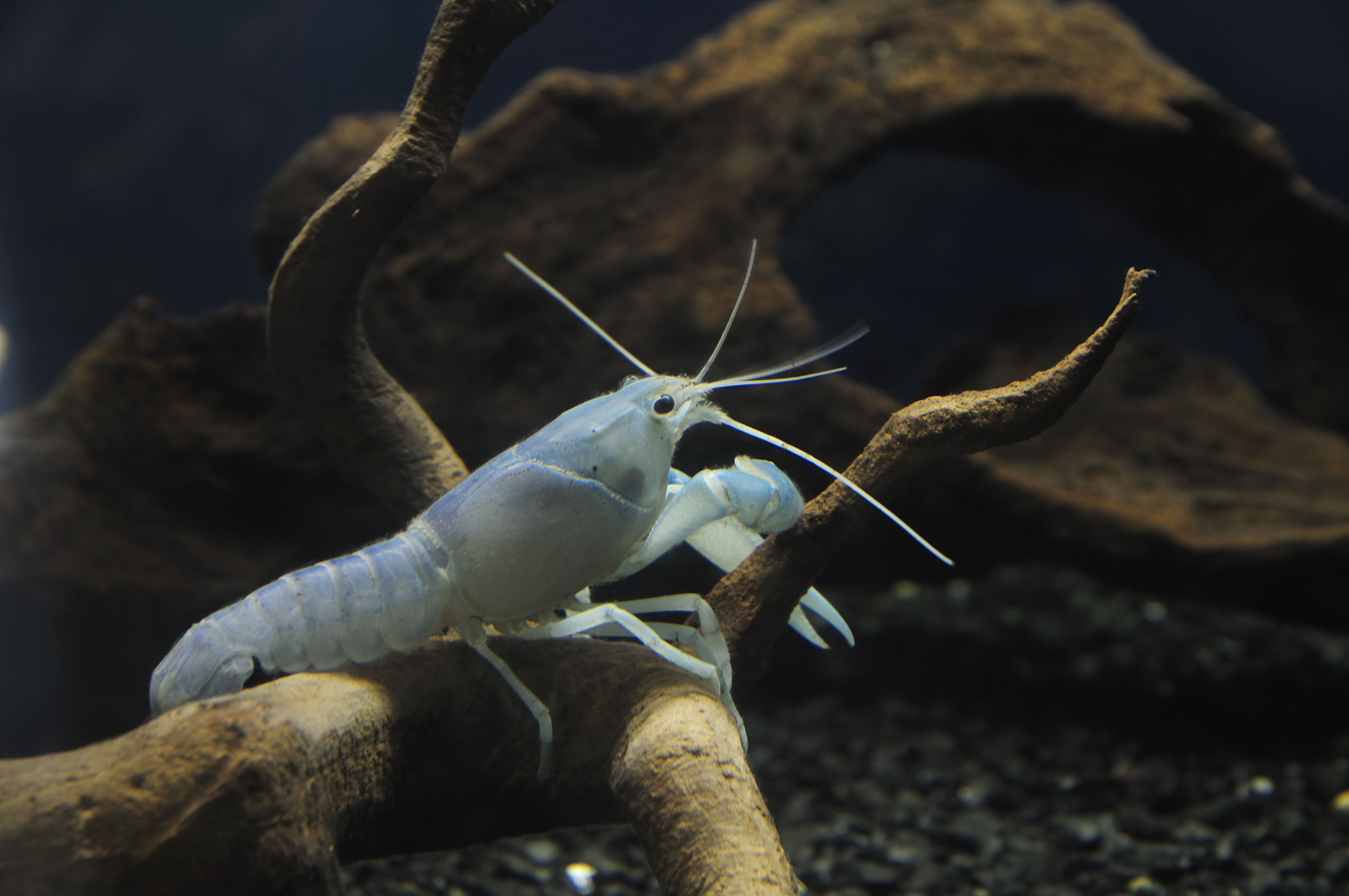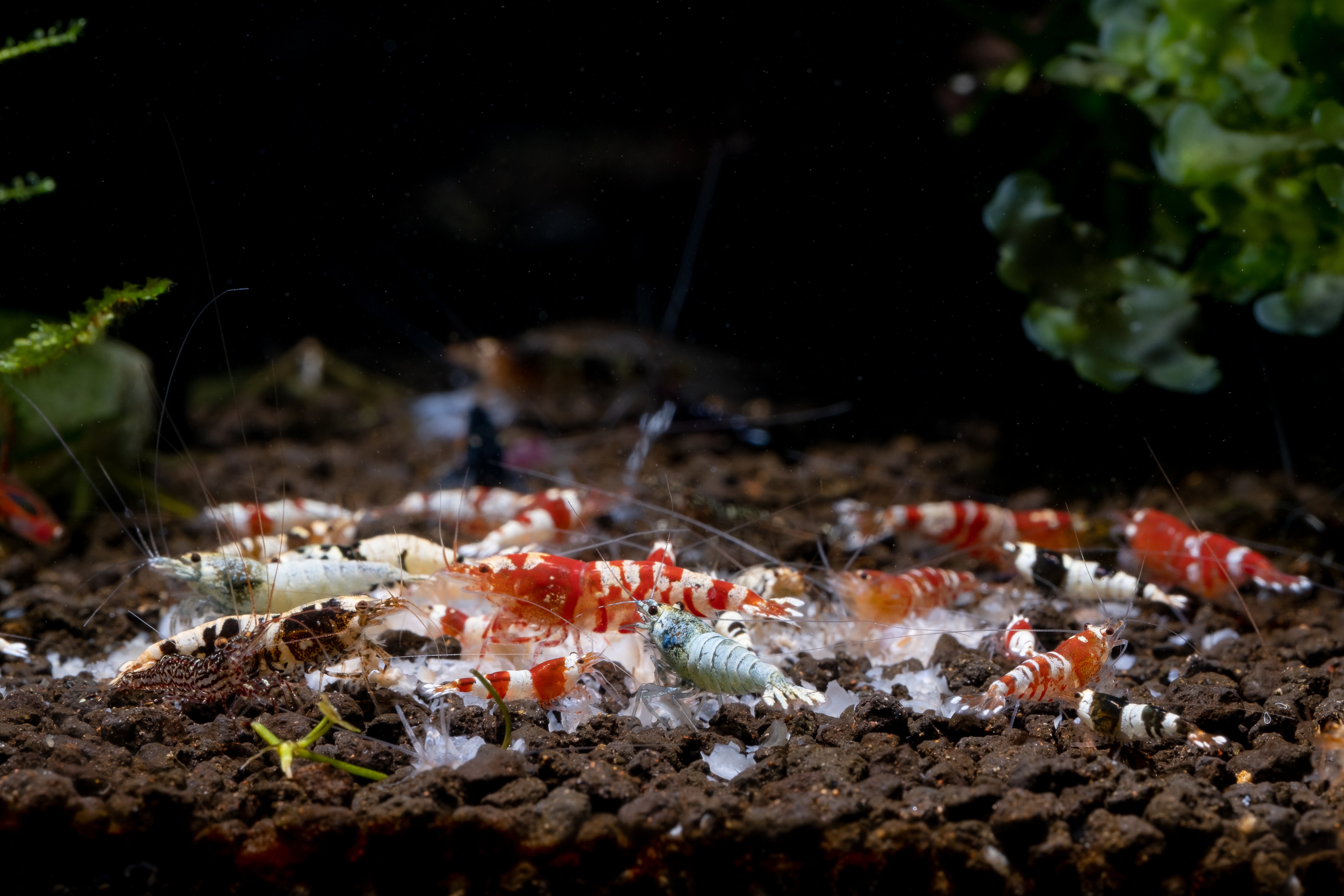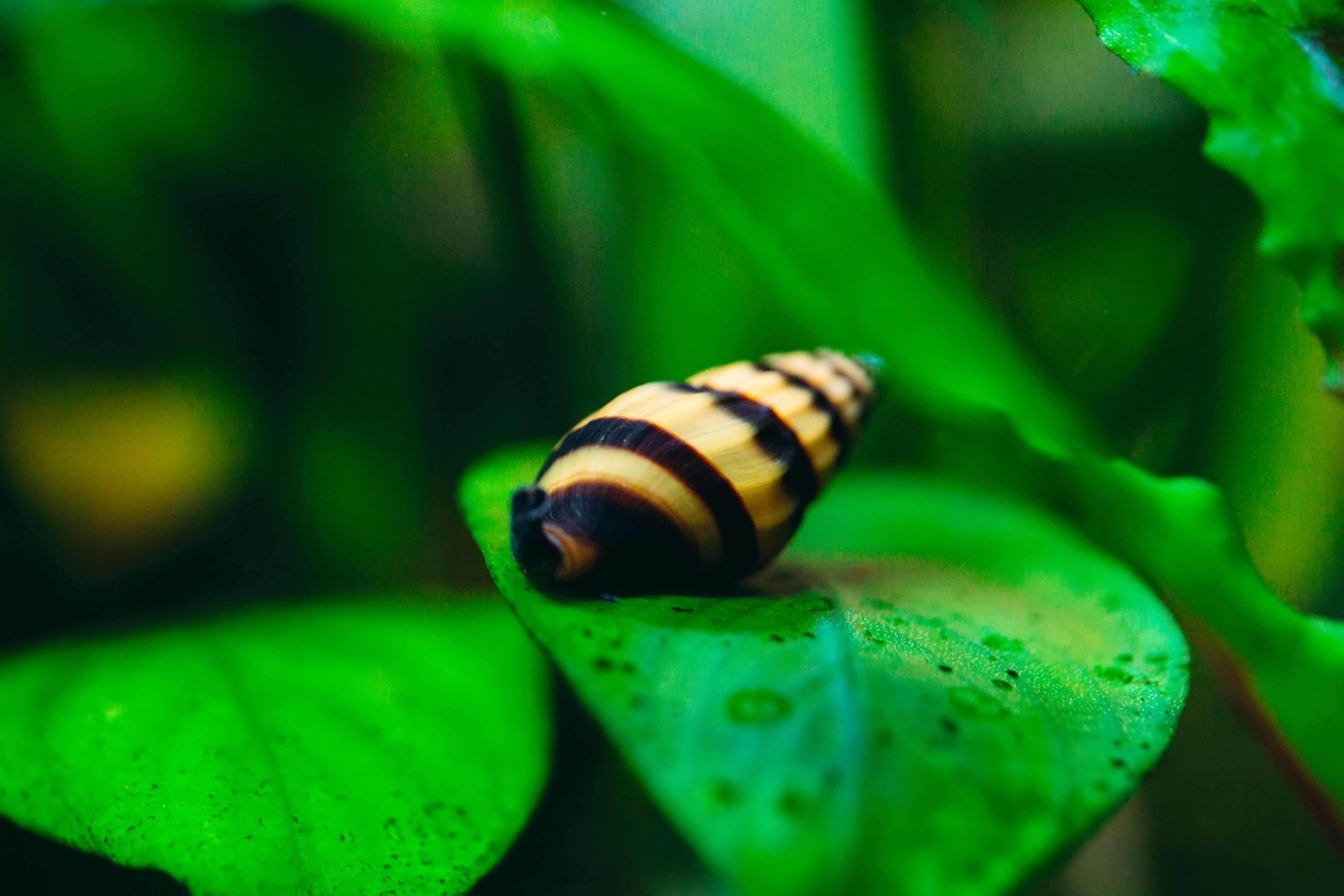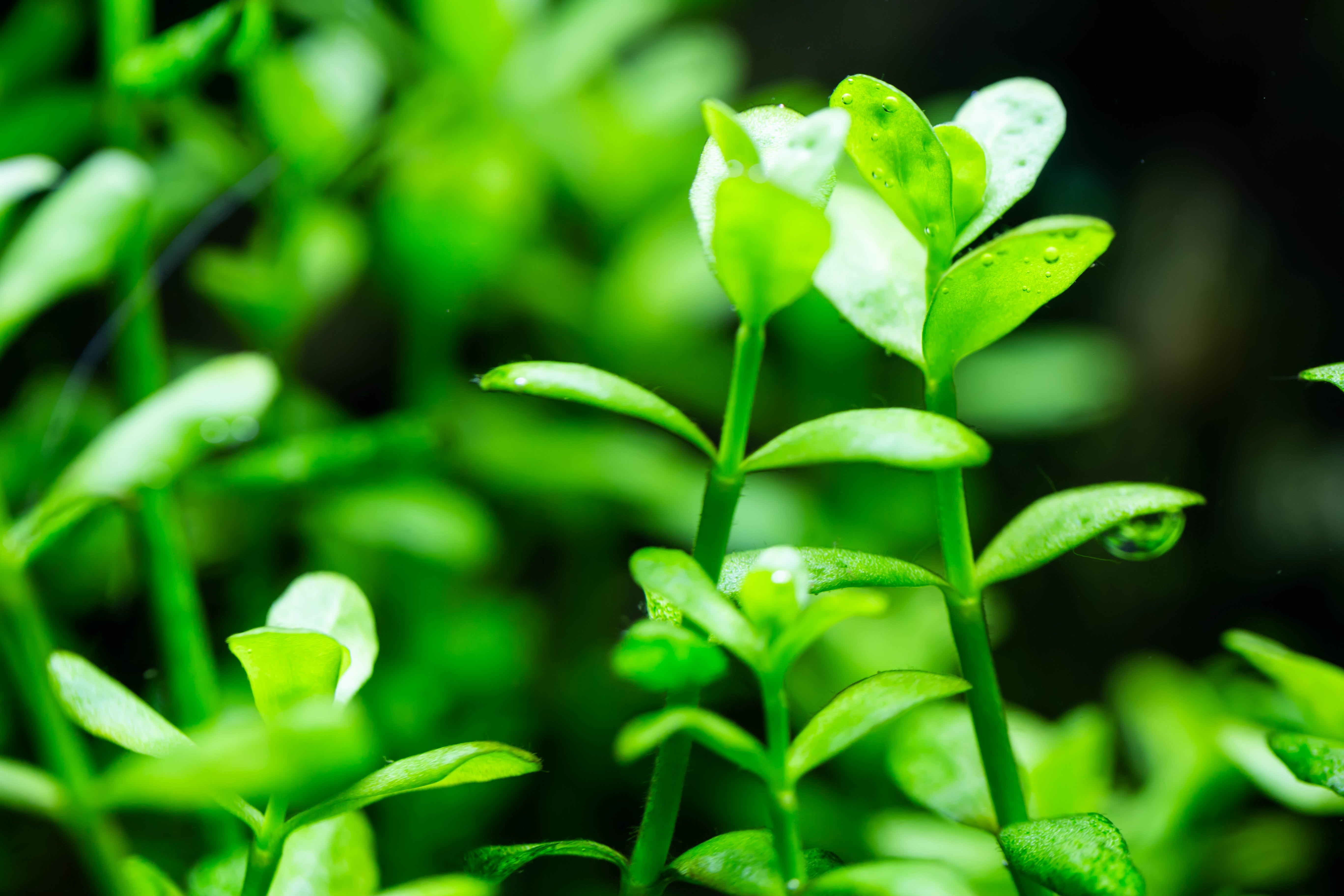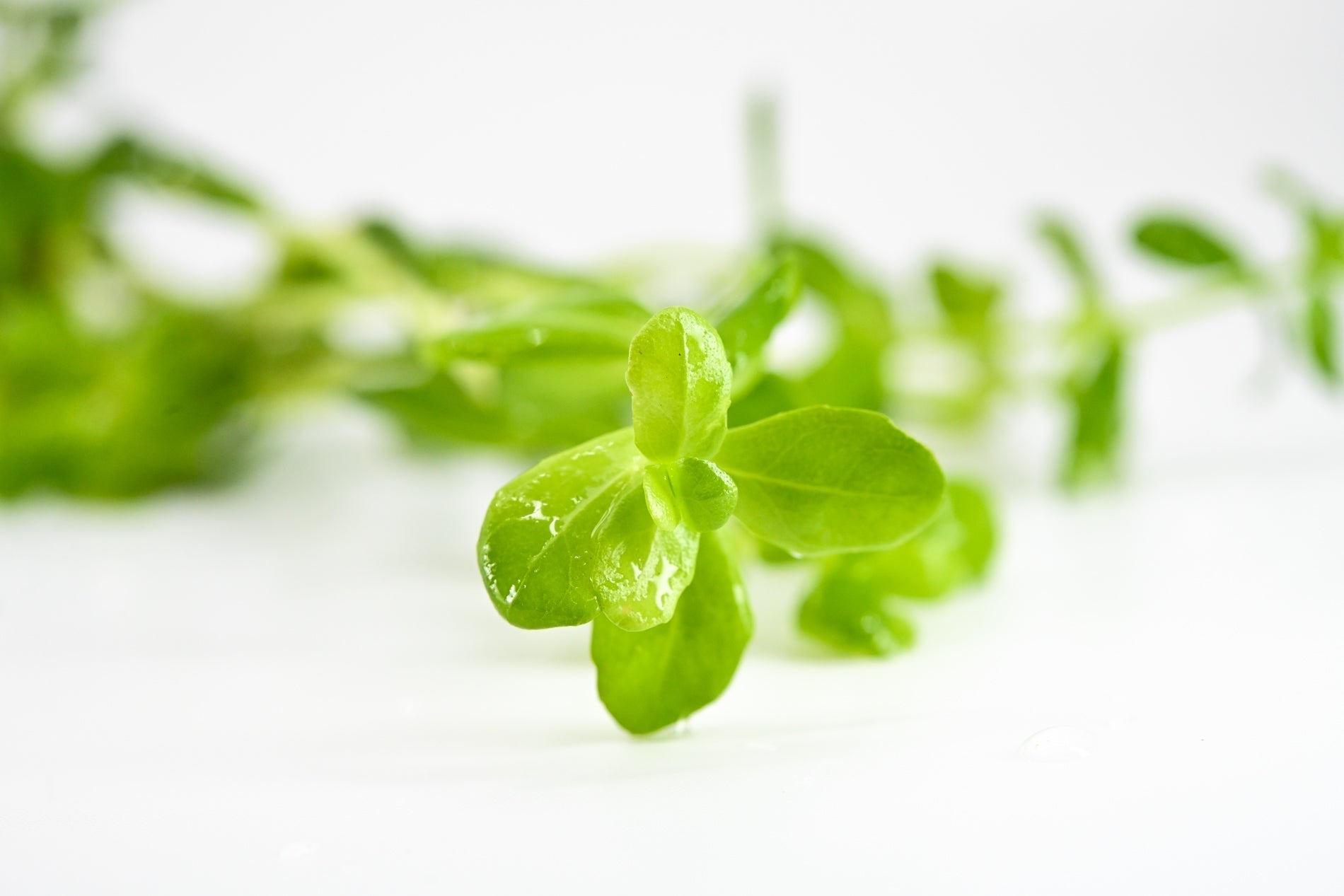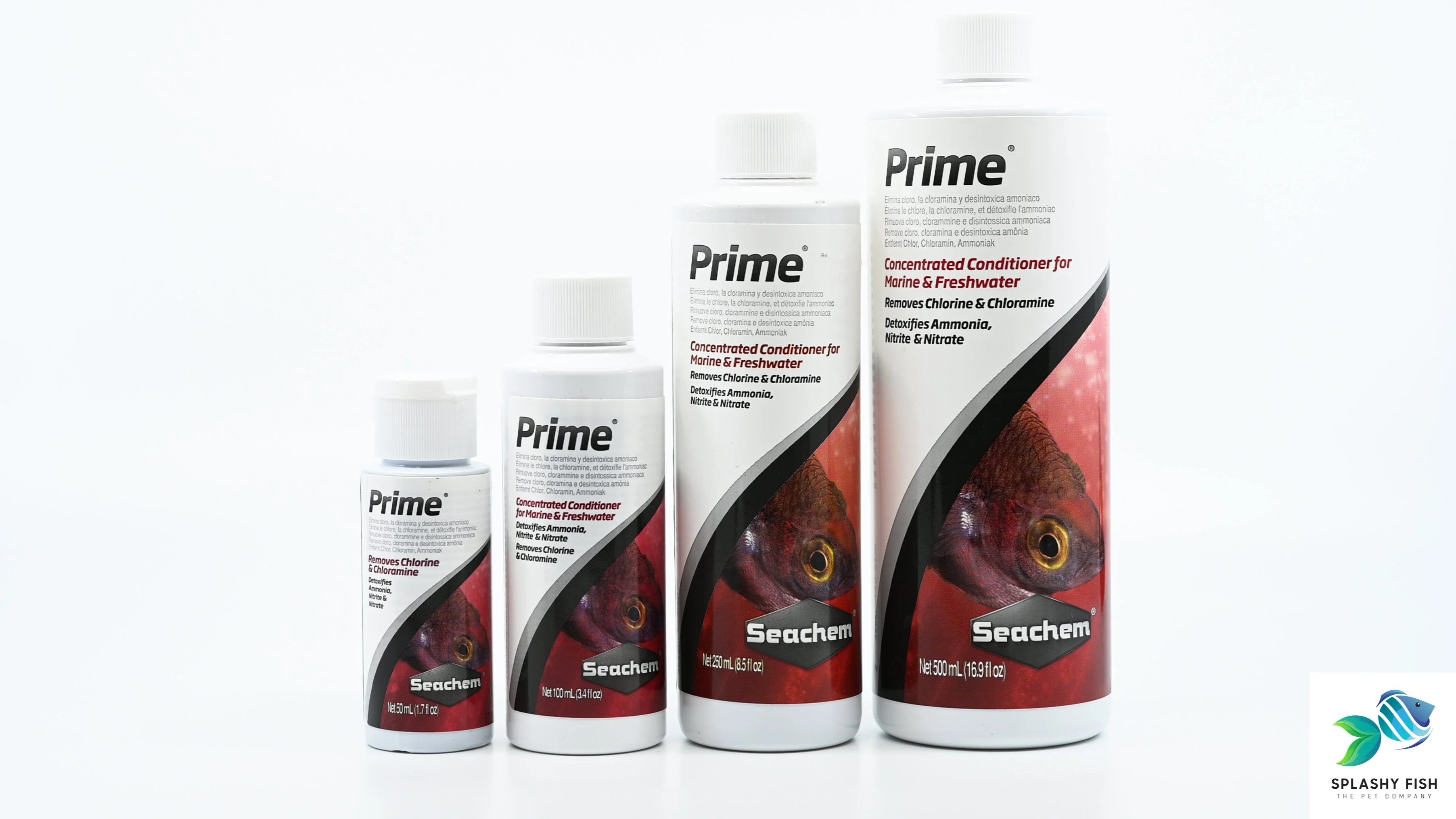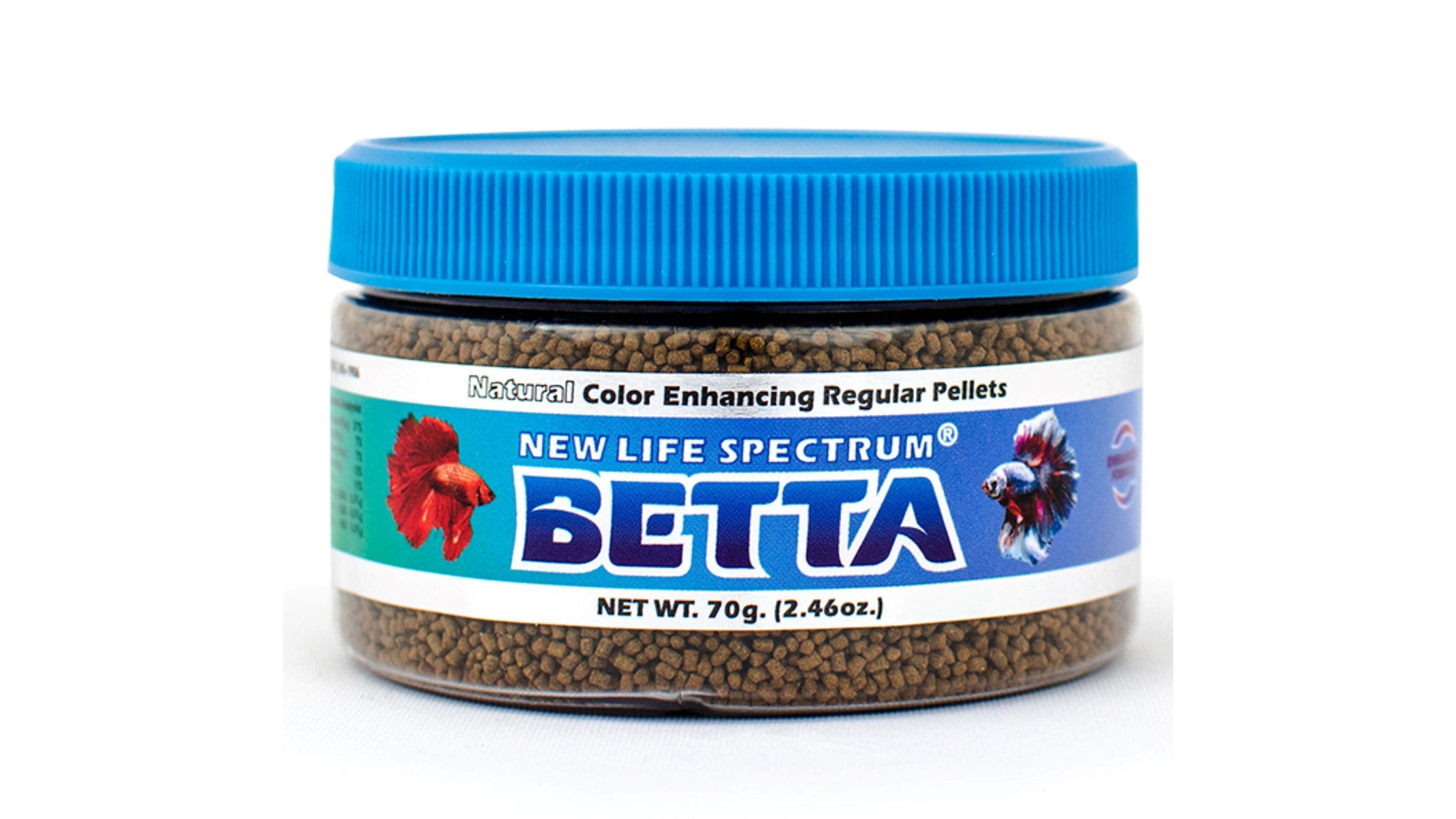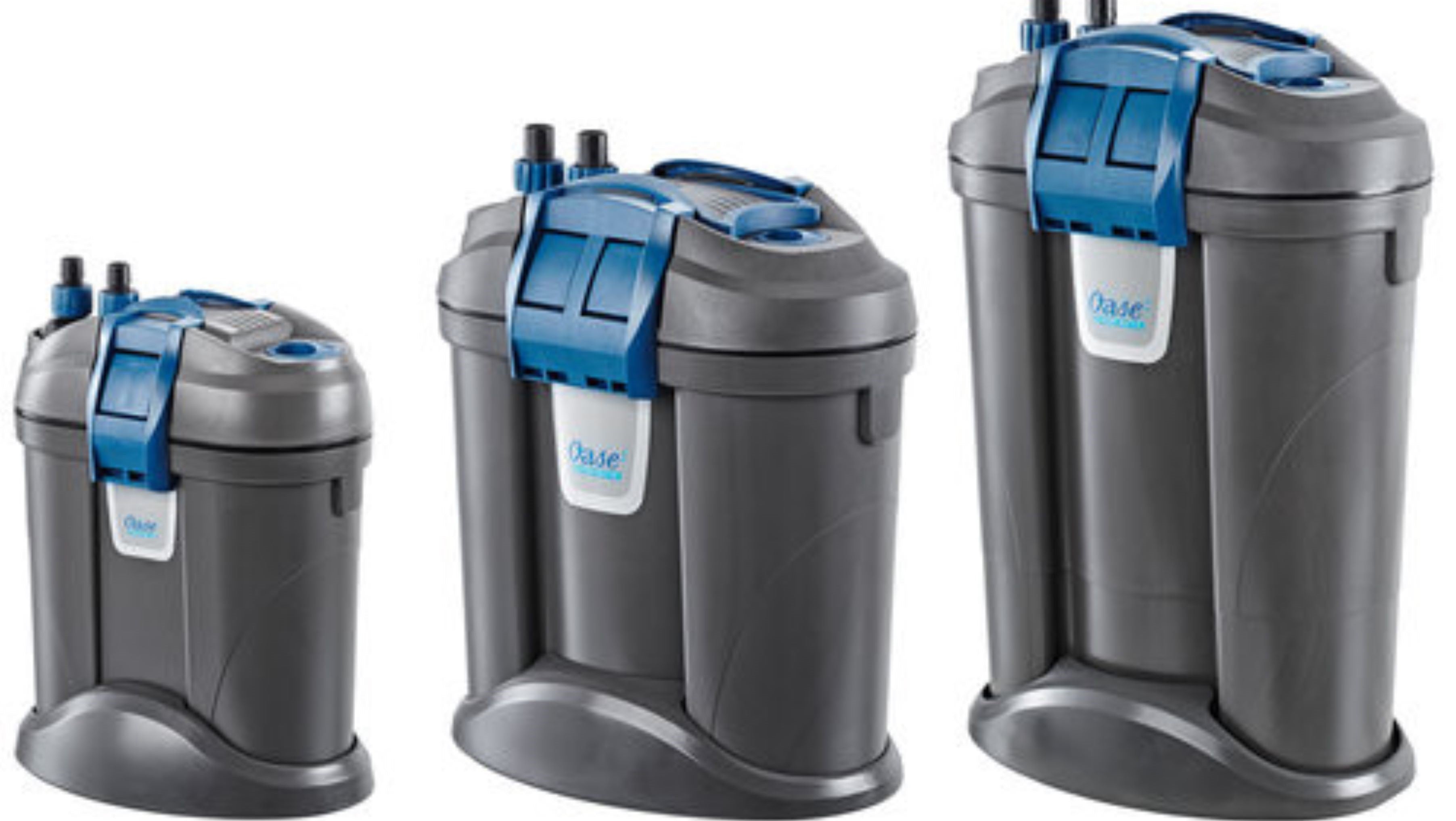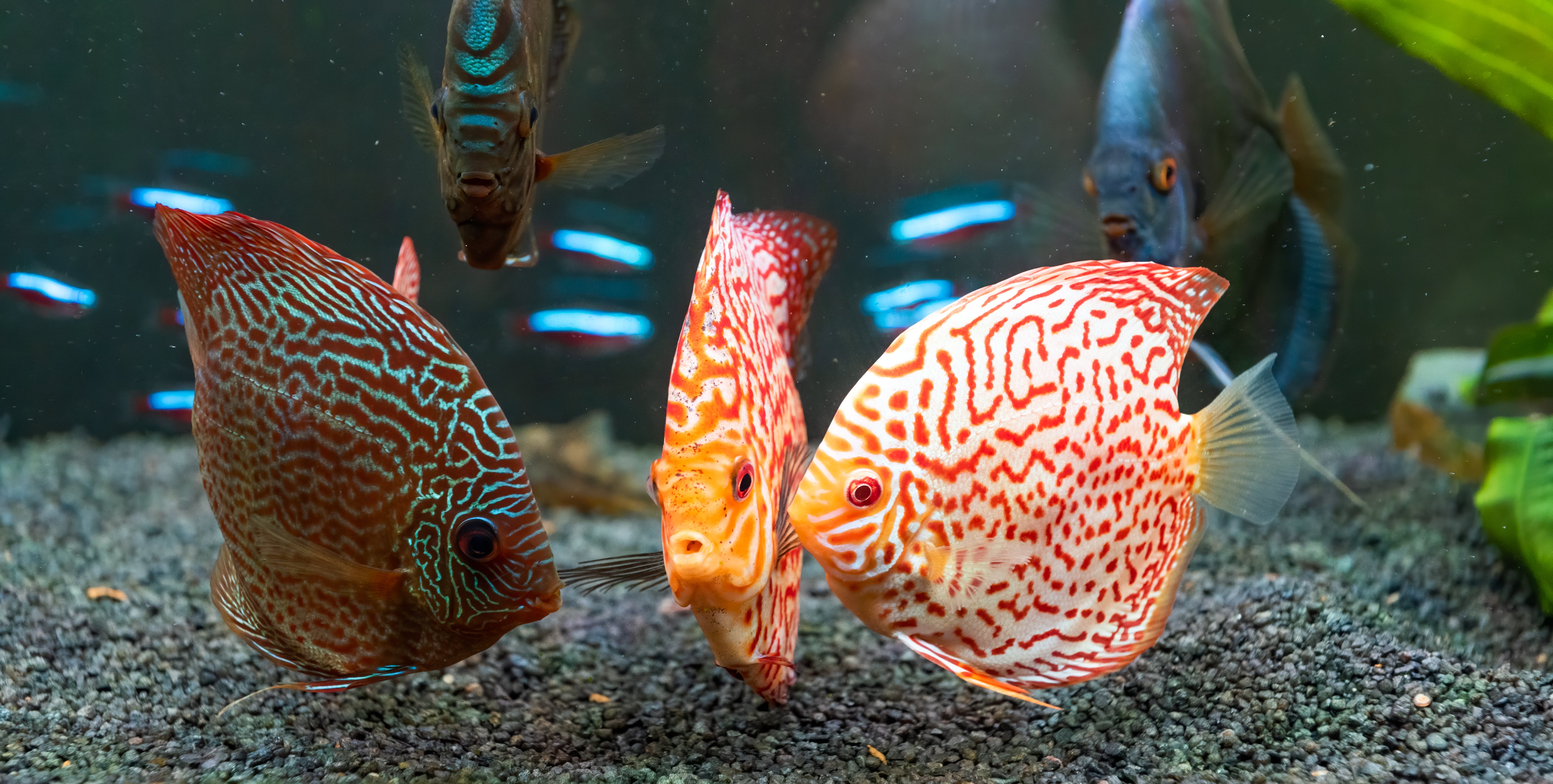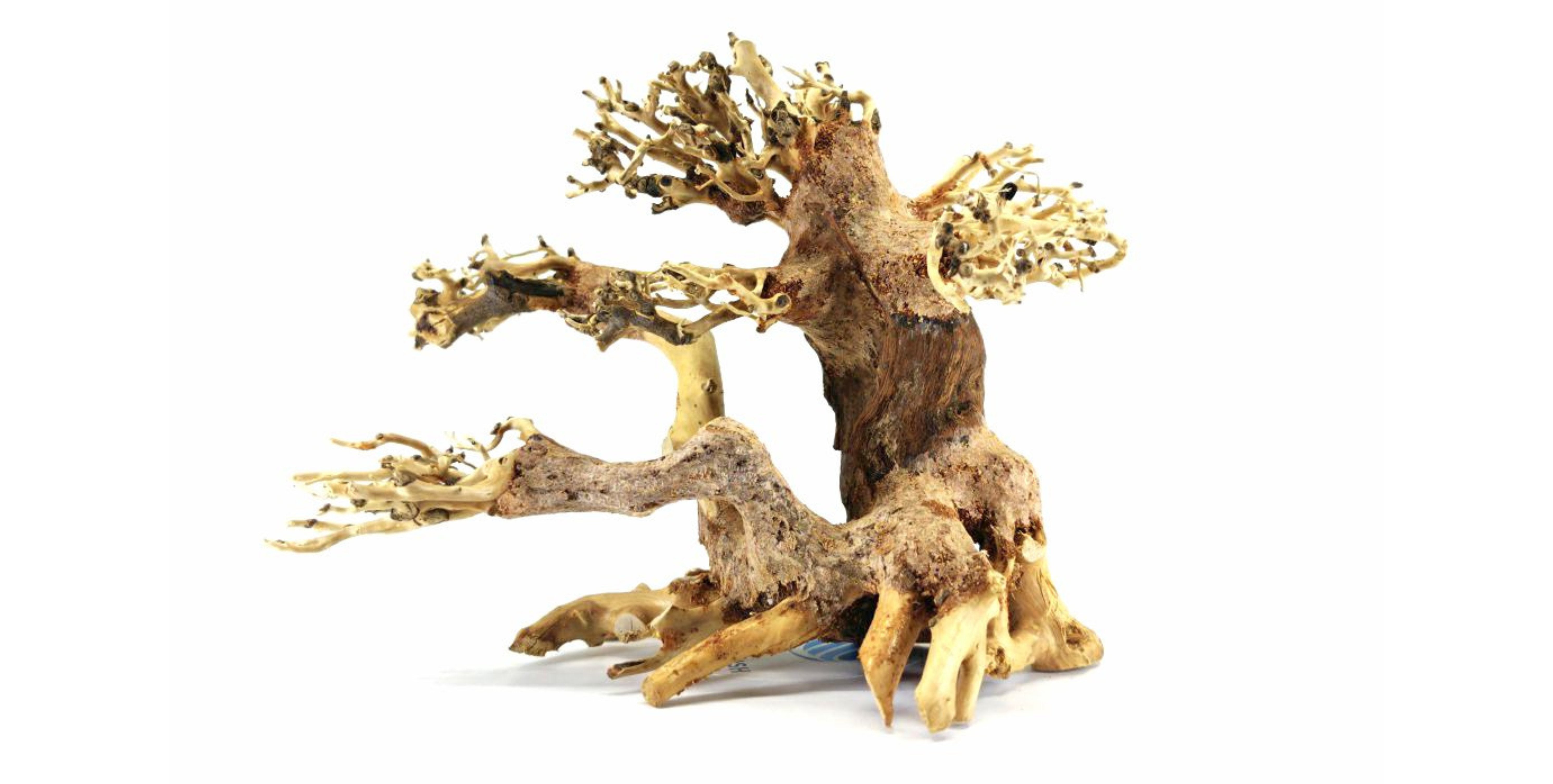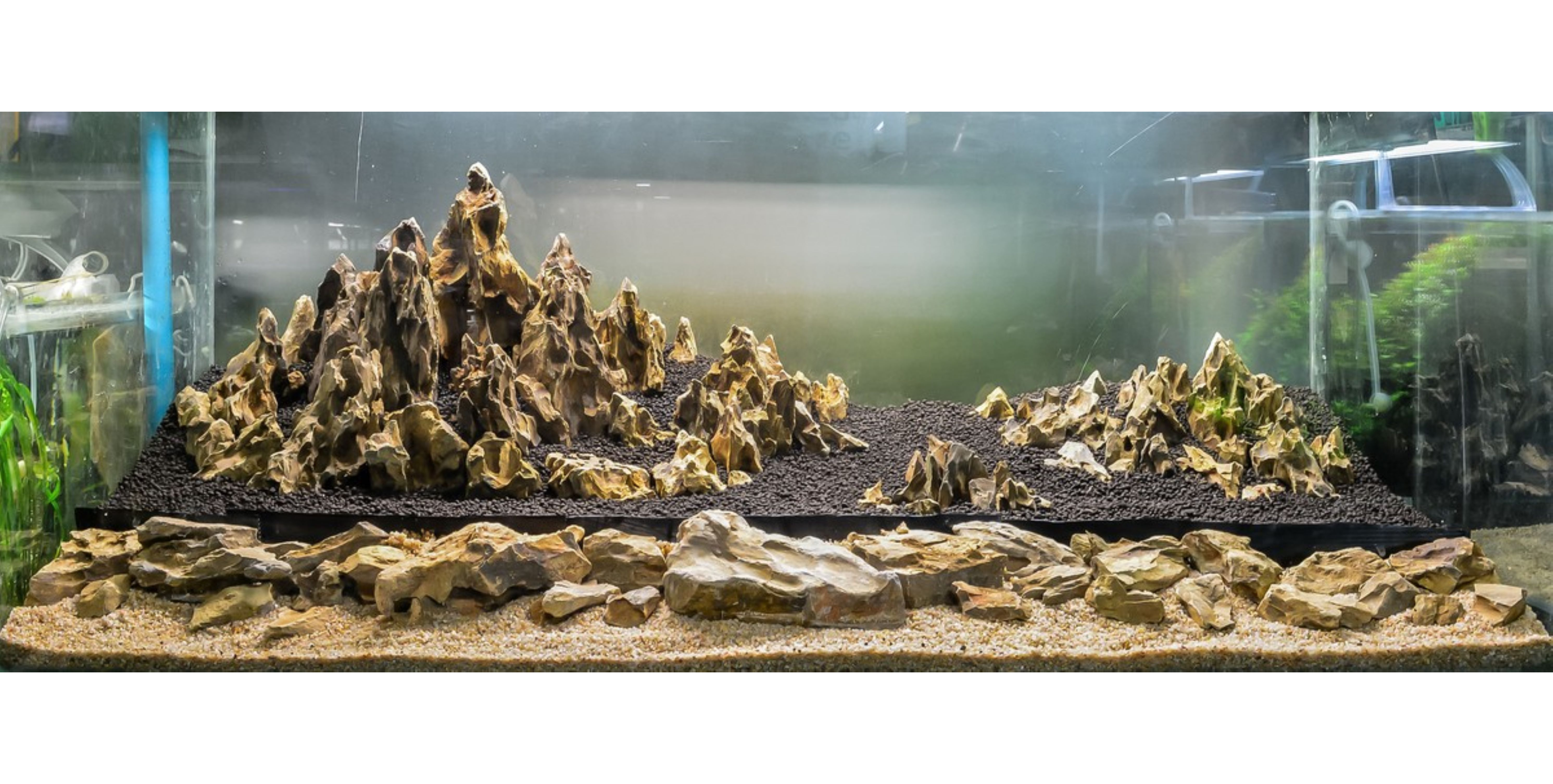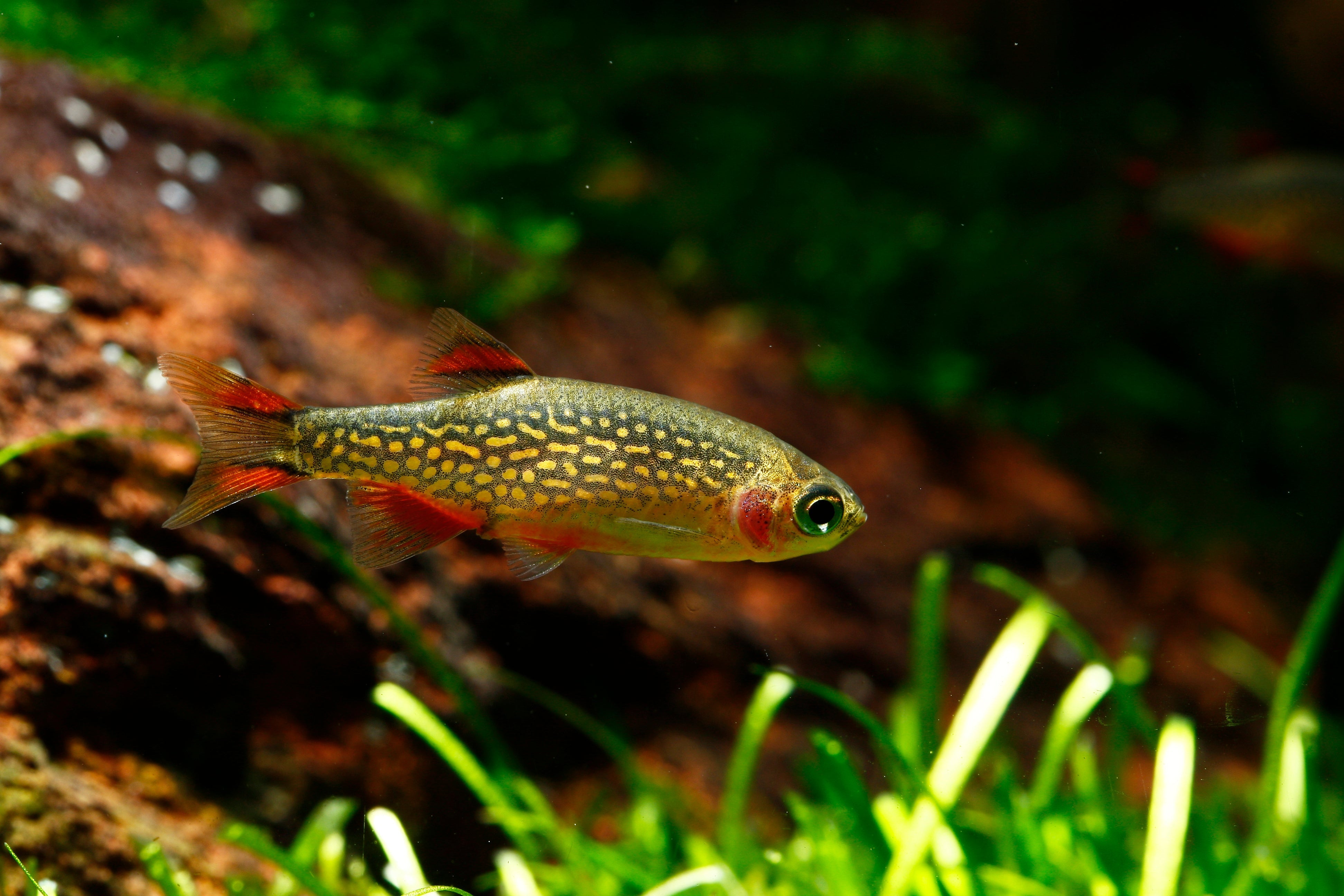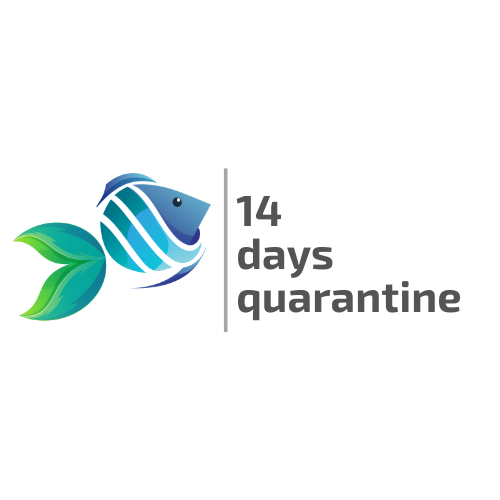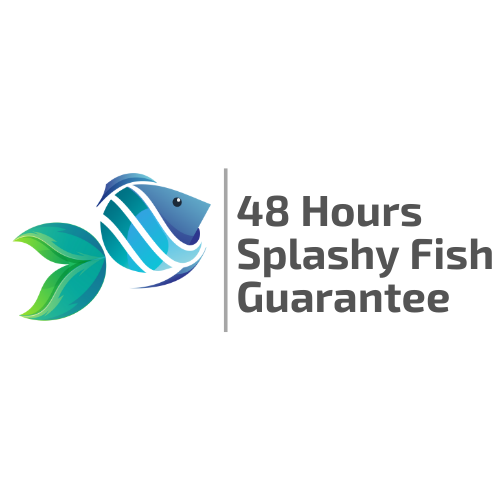Table of Contents
Celestial Pearl Danio is an option that every fishkeeping beginner should not disregard when considering their first ‘pet’ in fish tanks, especially nano tanks.
Why do we affirm that statement? This is because you can find nowhere a splendid creature yet easy to keep in captivity, and that has not yet mentioned the ability of such freshwater fish to survive common mistakes made by beginners.
Celestial Pearl Danio Overview
Celestial Pearl Danios (Danio Margaritatus), or sometimes called Galaxy Rasboras, are freshwater fish native to Southeast Asia. Having been introduced to the aquarium hobby for the first time since 2006, Celestial Pearl Danios soon captured the hearts of many aquarists by the vibrant colors displayed in deep blue with pearl-like spots scattered over the entire body. In contrast are the deep orange/ red fins and belly, having two black lines running through. Come together, those features give Celestial Pearl Danio the brilliant look that many other species may envy.
In wild habitats, Celestial Pearl Danio are often found dwelling in small and vegetated ponds where calm, still water movements and high lighting conditions prevail. They also like to shelter themselves in rock caves or other hiding places which allow security and comfort. Hence, mind such features when you create a home aquarium for Celestial Pearl Danio. Relatively small in size and timid in disposition, it is not strange if you notice the fish spend most of their time exploring the surroundings or laying behind live plants or any other décor. As noticeable as Celestial Pearl Danios are, they liven up whatever places they go by.

Image of Celestial Pearl Danio
Celestial Pearl Danio Tank Setup
In order to let the fish boast to its optimal coloration and stay healthy, setting up an appropriate fish tank for Celestial Pearl Danio is very important. What do Celestial Pearl Danios need for their home aquarium? The answer will include tank size, aquarium devices, and proper water parameters.
Although the species are widely known for their hardiness, they appreciate a fish tank replicating their natural environment. This means plenty of live aquarium plants and decorations such as rock caves and driftwood, are worth considering. Some potential candidates of aquatic plants that Celestial Pearl Danios would prefer include Java Fern, Bacopa, Rotala, and floating plants like Red Root Floater or Pennywort. Indeed, live aquarium plants play a crucial role in keeping the fish thriving. Not only do freshwater plants provide hiding places for the fairly shy specimens, but they could also be a light snack for the Celestial Pearl Danio to munch occasionally. Further, such plants would become the preferred areas for the fish to lay eggs during breeding seasons.
Concerning all of the above, it is highly recommended that a tank of at least 10 gallons be suitable for a group of 5 to 6 individuals. Such size allows Celestial Pearl Danio to swim comfortably while ensuring abundant room for other additions. That said, you could keep more than 6 specimens as long as you follow the good ratio of 2 gallons per fish, with mostly females if possible. Celestial Pearl Danios are peaceful, yet they still show certain aggressive behaviors towards other Celestial males, particularly when the courting period comes. If you wish to raise a big group, in addition to the good ratio of males to females, make sure you provide Celestial Pearl Danios with ample space and hiding places to avoid extreme harassment.
Celestial Pearl Danio lives in shallow water thus, they would like to reside in a relatively shallow tank. When it comes to substrates, they are not picky at all. Despite bottom-dwellers, they are not known for digging, therefore, we recommend choosing the substrate that works well with whatever aquarium plants you go for.
Celestial Pearl Danio Tank Parameters
As a tropical fish, Celestial Pearl Danio enjoys temperatures ranging from 73° to 79°F (around 23° – 26°C). Soft to medium water with slightly acidic pH levels is necessary for maintaining its good health conditions. Though the hardy nature allows Celestial Pearl Danio to withstand a wide range of water parameters, it is best to keep such indicators stable.
- Ammonia and Nitrite: 0 ppm
- Nitrate: less than 20 ppm
- KH: 2-10 dKH
- pH: 6.5 – 7.5
- Water change: 20% per week
To achieve the standards, equipping the tank with good heater(s) is indispensable if your room temperature does not meet the requirement. Besides, good water test kits should always be available so as to check and make sure everything is in order.

Celestial Pearl Danio Diet/Feeding
We really love Celestial Pearl Danios as the little lovely creatures are undemanding in many aspects, even in terms of diet. The freshwater fish are omnivores and not picky eaters in the wild. As such, their diets indeed vary significantly. In captivity, Celestial Pearl Danio will accept commercially available flakes or pellets, especially the sinking ones. Mind that they are bottom-dwellers so as to make sure they can approach what you provide for.
Brine shrimp, krill, Grindal worms, and live Daphnia are all good choices. They also feed on algae, plant matter, and zooplankton. Celestial Pearl Danios are quite opportunistic feeders. Even though they are not commonly known for getting out-competed for food, it is highly recommended that you watch them closely to learn their eating habits, as well as make sure meal portions are well shared.
Since Celestial Pearl Danios are pretty easy-going, try to rotate the diets and feed them high-quality fish food to make sure the fish get sufficient and necessary nutrients to grow up strongly and beautifully. Given its tiny mouth, break large food into small pieces so they can eat in a yummy way.
And last, don’t forget a good rule of thumb that feeds them twice a day with an abundant amount for Celestial Pearl Danio to consume within 2-3 minutes. Then, immediately clean the leftover food once they finish their meals so as to avoid accumulation of waste in the tank water.
Healthy problems: Fortunately, scientists and aquarists haven’t found any new diseases that are exclusive to Celestial Pearl Danio. However, they are susceptible to other common diseases. Among them, fin rot affects the fish considerably. The main reasons may result from poor water conditions and fish fighting. If it is the former, perform a large water change and monitor parameters satisfactory to the fish’s requirements. On the other hand, if the reason lies with the latter, you then have to find out who the fighters are and which is dominant over the other. Then isolate the abuser and cure the injured with medical treatment if necessary.
Best Tank Mates for Celestial Pearl Danio
Most aquarists come up with Celestial Pearl Danios not only because of the above-mentioned, but also because the species can also live in and enhance a community tank.
Housing them together with other peaceful fish such as Tetras, Guppy, Corydoras, and killifish could not be more perfect. Since all share a similar size and temperament, Celestial Pearl Danio will not be regarded as prey, being attacked by other faster, larger, and more aggressive fish. This also means you should avoid those of belligerent behaviors and predators (e.g., Cichlids, Oscars).
Be aware of ample space for other fish if you aim at a community tank. The more fish you add, the bigger tank you need.
Notes: Celestial Pearl Danio is sometimes known for attacking and eating juvenile shrimp. Hence, if you consider shrimp the next addition, note this matter.
Celestial Pearl Danio Breeding
Breeding Celestial Pearl Danio is fairly straightforward. However, before we go further into this process, you have to have a good couple of males and females. Celestial Pearl Danio males could be differentiated from the females thanks to coloration and body shape, and sometimes even the temperament. Male species tend to be thin and often more vibrant in color, especially on the tail, whereas the females are slightly duller and more round in shape. Such features are even bolder during the breeding period. If there is more than one male in the group of Celestial Pearl Danios, you may find the males aggressive and seeking to fight most of the time.
Celestial Pearl Danios are egg layers. When they are ready for spawning, you will notice the female fish are darker in color and have a rounded abdomen. Eggs will be laid somewhere having less water movement and of around 12 to 30 eggs at a time. If you aim at breeding Celestial Pearl Danio, you should mind the information that Celestial Pearl Danio males are known for eating the eggs.
Tips: A separate breeding tank may be needed in this situation to reduce the loss of the eggs. Make sure the breeding tank imitates the living conditions established in the main tank and has plenty of vegetation for the safety and comfort of the baby fish.
After 2-4 days, these eggs will enter their larval stage and begin to swim. You now can feed the babies micro foods to keep them healthy. At this stage, it could be said that the breeding is over, and all you need to do is raise the babies patiently till they fully grow up.
If you keep things going well, the goddess of luck will be on your side and bless your Celestial Pearl Danios with a lifespan of up to 5 years in the maximum.
Final Thoughts
Celestial Pearl Danios are a stunning and beginner-friendly fish species that add beauty and vibrancy to any aquarium, especially nano tanks. Their peaceful nature, adaptability, and resilience make them an excellent choice for both novice and experienced aquarists. By setting up a well-planted tank, maintaining stable water parameters, and providing a balanced diet, you can ensure your Celestial Pearl Danios thrive for years to come.
Whether you’re looking to create a serene home aquarium or start breeding these dazzling fish, Celestial Pearl Danios are a rewarding choice. At Splashy Fish Store, we take pride in offering high-quality, healthy freshwater fish for sale that have undergone a thorough 14-day quarantine to ensure their well-being. Browse our collection today and bring home your own school of Celestial Pearl Danios for sale!
Celestial Pearl Danio Care Frequently Asked Questions (FAQs)
Are Celestial Pearl Danios hard to keep?
No, Celestial Pearl Danios (CPDs) are easy to keep, making them a great choice for beginners. They are hardy fish that adapt well to stable water conditions. As long as you provide a well-planted aquarium, maintain optimal water parameters (temperature: 73°–79°F, pH: 6.5–7.5), and offer a nutritious diet, they will thrive. Regular water changes and monitoring water quality are key to keeping them healthy.
Can I keep Celestial Pearl Danio with Betta fish?
Yes, but with caution. While Celestial Pearl Danios are peaceful, Bettas can sometimes be aggressive, especially towards small, active fish. If you want to keep them together, ensure your tank is at least 10–15 gallons, well-planted, and has plenty of hiding spots. Choose a non-aggressive Betta and observe their behavior closely. If aggression occurs, consider a divider or a separate tank.
Are Celestial Pearl Danio schooling fish?
Yes, Celestial Pearl Danios are schooling fish and thrive in groups of at least 5–6 individuals. Keeping them in a group helps reduce stress, encourages natural behaviors, and makes their vibrant colors more pronounced. A larger school (8–10 fish) is even better, as they feel safer and interact more dynamically in the aquarium.



